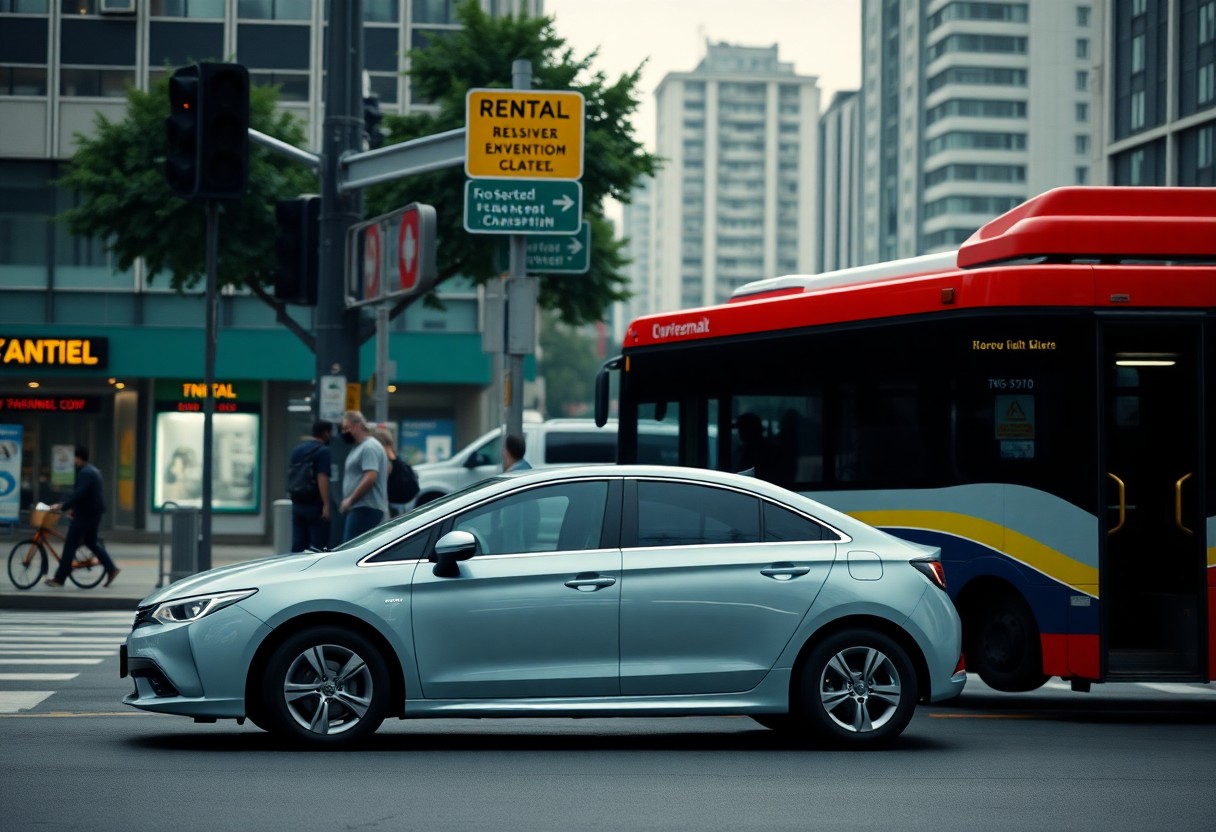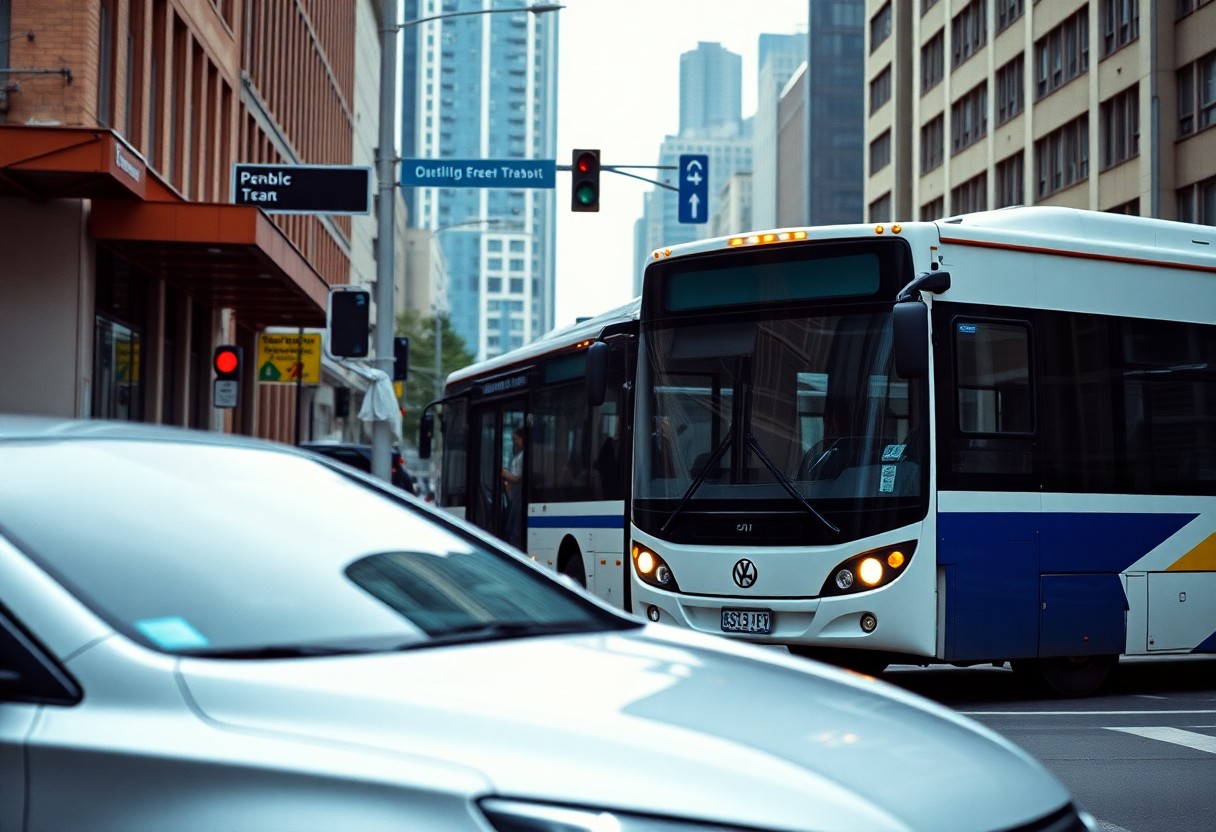As travel expenses continue to rise and personal time becomes increasingly valuable, making an informed choice about your transportation method is essential. This decision significantly impacts both your financial budget and the overall quality of your travel experience. When planning your next adventure, you’ll face the choice between the freedom offered by a rental car and the affordability of public transportation. Your decision will depend on various factors such as your travel destination, itinerary, and the number of companions you have. This comprehensive guide aims to help you explore crucial considerations, including hidden rental fees and public transport accessibility, ensuring you make a well-informed decision tailored to your specific travel needs.
Unlock Unmatched Travel Freedom with a Rental Car
Embracing the independence of having a rental car opens up a world of travel possibilities. Choosing a rental car means gaining full control over your itinerary and exploring destinations that extend beyond the usual tourist hotspots. Recent studies show that 73% of travelers prefer rental cars for their flexibility in adjusting plans spontaneously, making this a particularly appealing option for those who value autonomy during their journeys. The ability to stop wherever you want and to change your plans on a whim can enhance the overall enjoyment of your trip, allowing you to create unique experiences based on your interests.
Exploring the Advantages and Limitations of Rental Cars
Once you secure your rental vehicle, you’ll encounter both the joys of newfound freedom and certain limitations. You can venture into remote areas and adjust your schedule at a moment’s notice, but it’s vital to consider factors like potential parking fees (which can average between $25-45 daily in bustling urban settings) and the navigation challenges that might arise. While your rental car can serve as a personal sanctuary, you are also responsible for fuel expenses and navigating through traffic, which adds another layer of responsibility to your travel experience.
Uncovering Hidden Fees and Unexpected Savings Opportunities
While the freedom provided by a rental car comes with its costs, it can also present unexpected financial advantages. Although initial rental fees may seem high, it’s crucial to understand that group travel can often be more cost-effective than purchasing multiple public transport tickets individually. Recent statistics indicate that families of four or more typically save 15-20% on transportation expenses by opting for a rental vehicle instead of public transit options. This makes it an attractive choice for families looking to maximize their travel budget while enjoying greater flexibility.
A deeper analysis of the financial aspects reveals additional factors worth considering. For instance, insurance premiums can add $15-30 per day to your rental costs, although many credit card companies offer rental car protection options. Additionally, the fuel efficiency of modern rental fleets (averaging around 30-35 MPG) helps to offset overall expenses, while the convenience of door-to-door travel can save you significant amounts of precious vacation time.

Master the Local Public Transportation System for Stress-Free Travel
If you choose to rely on public transportation, understanding the system should be your first priority. Most major cities now offer user-friendly transit apps that help with route planning, real-time arrival tracking, and ticket purchases. Familiarizing yourself with the local transit network is crucial, including bus routes, subway lines, and transfer stations. Research indicates that 55% of urban travelers save as much as 30 minutes per trip by utilizing transit applications. Embracing these digital tools can significantly enhance your travel efficiency and experience.
Successfully Navigating the Urban Public Transit Landscape
Every city’s public transport system has its own unique patterns and operational rhythms. Be prepared for peak hours, typically between 7-9 AM and 4-6 PM, when crowds are at their densest. Thus, your navigation strategy should incorporate alternative routes, as delays can frequently occur. To ensure timely arrivals for critical appointments, consider including a buffer time of 15-20 minutes in your travel plans. This proactive approach will help you navigate the complexities of urban transport and enhance your overall travel experience.
Engaging with the Social Dynamics of Public Transit
Beyond practical considerations, using public transportation offers a unique social experience. You will share space with both locals and fellow travelers, allowing you to immerse yourself in the true essence of the city. While this can lead to occasional uncomfortable situations, it also provides invaluable cultural insights. Research shows that regular public transit users develop enhanced social adaptation skills, enabling them to navigate various social interactions effectively. This social aspect can enrich your travel experience and broaden your understanding of the local culture.
At times, you may encounter diverse social situations while using public transport. From the bustling energy of rush hour to the tranquil solitude late at night, each period presents its own unique atmosphere. Safety becomes especially critical during off-peak hours, so it’s essential to remain vigilant and choose well-lit, populated areas for waiting. Most transit systems now feature 24/7 security monitoring and emergency communication systems, contributing to your safety while navigating the urban landscape.
Analyzing the Financial Aspects of Your Transportation Choices
When weighing your travel options, budgeting is a key consideration in deciding between rental cars and public transport. Your transportation expenses can vary dramatically based on factors such as your destination, trip length, and the number of travelers. While rental cars offer greater flexibility, they also come with hidden costs like insurance, fuel, and parking fees. Despite public transport appearing less expensive initially, frequent daily rides can quickly add up, impacting your overall travel budget.
Breaking Down the True Costs of Driving a Rental Car
A thorough financial evaluation of car rentals uncovers expenses that extend well beyond the daily rental rate. You should account for $30-50 daily for insurance, average fuel costs of $40-60 per tank, and potential parking fees that can escalate to $50 per day in major urban centers. As a result, your total daily travel costs could range from $100-200, making rental cars more economically viable when traveling in a group.
Diving into the Cost Dynamics of Public Transit Tickets
At first glance, public transportation seems like the more budget-friendly option. In cities like New York, where average metro cards are priced at $34 for unlimited weekly rides, substantial savings can be achieved compared to the costs associated with rental cars. Moreover, you avoid additional expenses such as parking and fuel, making public transit particularly advantageous for solo travelers who are looking to save money while exploring the city.
Cost comparisons illustrate that weekly public transport passes in many large cities typically range from $25-40, offering unlimited rides. However, for families or groups of four or more, the cumulative cost of multiple transit passes might exceed the cost of a rental car, especially when planning extensive daily travel or trips to areas with limited public transport availability.

Maximizing Your Time Management for Efficient Travel
As you weigh the decision between rental cars and public transport, prioritizing your schedule is essential. A rental car enables direct, point-to-point travel, potentially saving you up to 40% of your overall travel time compared to using public transportation. Time is invaluable; while public transport may seem cheaper, it’s crucial to consider the hours spent waiting, transferring, and walking to and from stations, which can detract from your travel enjoyment.
Enjoy the Flexibility of Spontaneous Scheduling with a Rental Car
When it comes to time flexibility, a rental car offers complete autonomy over your departure and arrival times. You can avoid rigid transit schedules, allowing for spontaneous detours or last-minute adjustments to your plans. This level of freedom is invaluable when unexpected changes occur or when you discover hidden gems during your journey that you wish to explore further.
Navigating the Challenges of Public Transport Scheduling
One of the primary challenges of public transportation lies in its adherence to schedules. Studies show that 23% of urban buses fail to run on time during peak hours, which can lead to significant disruptions in your plans. Your journey may require multiple connections, and delays in one service can create a domino effect, adversely affecting your entire day’s agenda.
To effectively navigate public transport, it’s wise to incorporate extra buffer time into your plans. Transport experts recommend adding 15-20 minutes to your estimated travel time for each connection. During rush hours or special events, consider doubling these buffers, as they can significantly impact the amount of time you have available for activities and sightseeing.
Assessing the Environmental Impact of Your Transportation Choices
When evaluating your transportation options, it’s crucial to acknowledge the environmental repercussions of your decisions. A single-occupancy rental car emits approximately 404 grams of CO2 per mile, while public transportation can reduce emissions by up to 45% per passenger. The choice between renting a car and utilizing public transport carries a significant environmental footprint that warrants your consideration.
Understanding Your Carbon Footprint and Its Implications
Every mile you travel directly impacts climate change and environmental degradation. A fully-loaded bus can eliminate the need for 50 cars on the road, substantially reducing overall carbon emissions. Driving a rental car can produce 4-5 times more CO2 than the equivalent trip via bus or train. However, choosing electric or hybrid rental options can help lessen this environmental impact, allowing you to enjoy travel while being mindful of sustainability.
Exploring Eco-Friendly Transportation Alternatives
Upon reaching your destination, you’ll discover an array of environmentally friendly transportation options. Electric car rentals can minimize your carbon footprint by up to 50% compared to traditional vehicles. Additionally, many cities now feature hybrid buses and electric trams, making public transport an increasingly sustainable choice for travelers. By considering these options, you can contribute positively to the environment while still enjoying convenient mobility.
Consequently, your environmental impact can vary significantly based on the transportation choices you make. Consider adopting a mixed-method approach—rent an electric or hybrid vehicle for longer trips while utilizing public transport in congested urban areas. Numerous rental agencies now offer green vehicle options, allowing you to maintain mobility while minimizing your ecological footprint.

Enhancing Your Comfort During Travels
In contrast to public transportation, rental cars provide full control over your comfort preferences. You can easily adjust the climate, seat positioning, and audio settings to match your personal tastes, creating an ideal travel atmosphere. This level of customization becomes especially valuable during extreme weather conditions or lengthy journeys, where overall comfort can greatly influence your travel enjoyment and well-being.
Enjoying Personal Space and Comfort in Rental Vehicles
One of the standout benefits of renting a car is the guaranteed personal space it offers. You won’t have to contend with crowded buses or trains, where personal space often shrinks to less than 4 square feet during busy travel times. Your rental car serves as a private oasis, giving you complete control over your travel environment and who shares it with you, allowing for a more pleasant and relaxed journey.
Understanding the Varied Comfort Levels of Public Transportation
Comfort levels on public transit can vary greatly due to factors beyond your control. During peak hours, you might find yourself crammed in with 150-200 passengers in a single subway car, significantly diminishing your comfort. The experience often entails standing for extended periods, especially during the average 38-minute commute in major metropolitan areas, which can be exhausting and less enjoyable.
During a typical rush-hour scenario on public transport, you may encounter noise levels peaking at around 80-90 decibels, comparable to the sound of heavy city traffic. These conditions, coupled with unpredictable delays and service interruptions, can make your journey less enjoyable and more taxing, particularly when traveling with luggage or in a group.
Determining the Best Transportation Option for Your Unique Needs
Ultimately, your decision between renting a car and using public transport should be based on your specific travel requirements. If you prioritize flexibility and comfort while traveling with family or friends, a rental car generally offers the best value, even considering the higher initial costs. Conversely, public transportation often suits solo travelers on a budget who stick to well-defined routes in urban areas. It’s essential to evaluate factors such as your destination, group size, planned activities, and budget. By carefully weighing these criteria against your personal preferences, you can select the transport option that aligns best with your travel objectives.
The Article: Renting a Car vs. Public Transport: Which is Best for Your Trip? appeared first on https://rentacar24.org/
The Article Renting a Car vs. Public Transport: Choose the Best Option for You Was Found On https://limitsofstrategy.com






Comments are closed